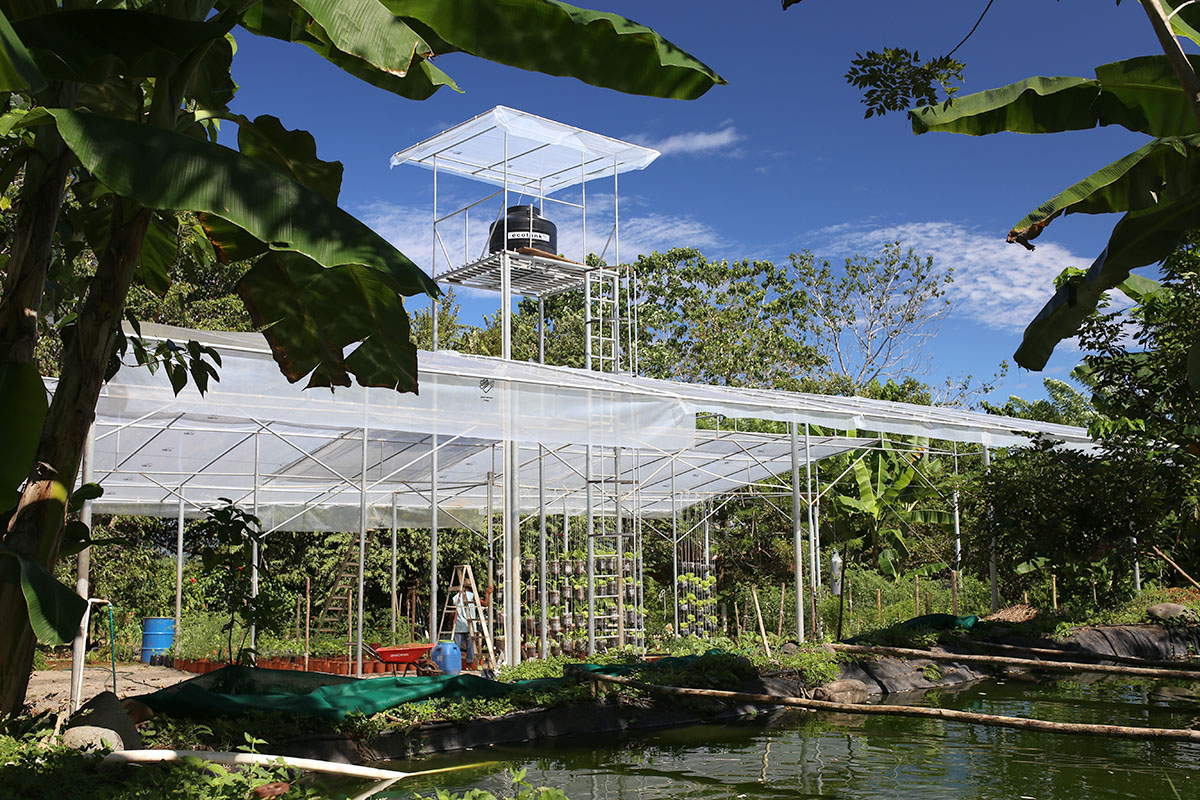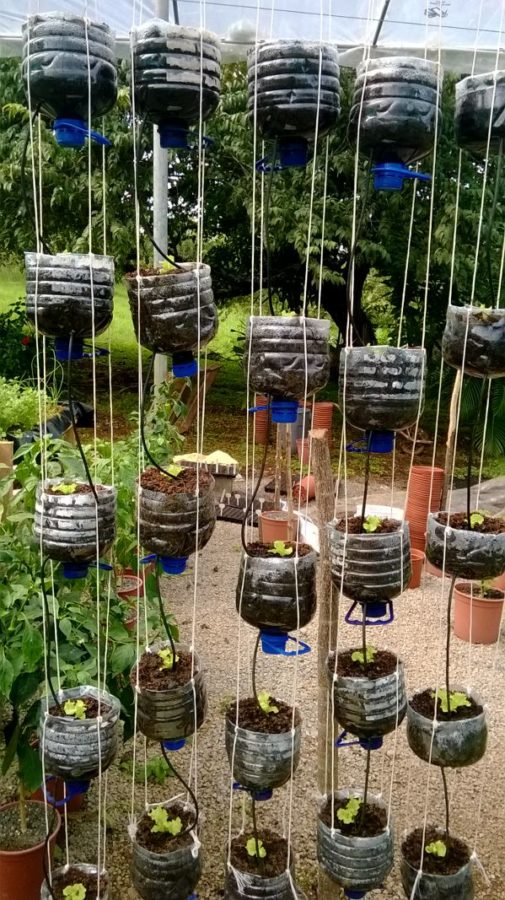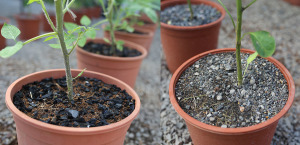Hydroponics Costa Rica
Originally we had wanted to use our Tilapia fish ponds to create an Aquaponics project here at the farm, which we saw as more “organic” in nature than hydroponics. However, the opportunity to learn hydroponics came up when an extensive two-week, hands-on course was offered in Cobano to people who lived in the area.
Yasmin and Julito took the program, spending dozens of hours in a very hot greenhouse, assembling four different types of hydroponics systems there. They were able to put that knowledge to good use and we quickly converted our “shade structure” into an open greenhouse.
Benefits of Hydroponics
Costa Rica’s climate ranges from near-desert, to tropical deluge, and many plants have a hard time growing here year round. Hydroponics allows us to carefully control the amount of water and sunlight that plants get, so we can grow more types of veggies year-round.The best benefit of hydroponic growing is that we can avoid the many nasty fungi that are in the soil here that attack many plants that don’t have natural defenses against them. We’re working on creating our own seeds that are resistant the the local diseases and fungi, but that could take years, so for now hydroponics seems to be our best bet for growing some types of veggies such as tomatoes and lettuce.
This doesn’t mean we’re giving up on soil gardening… we usually are planting our seedlings in both hydroponic form and in our raised soil beds, and sometimes the plants grow better in soil. But, there are also plants that grow much better hydroponically. So, we’re doing both and trying to gain the benefits of each.
Our Hydroponics Greenhouse Design
Basic Design: The recommended way to do this is to have walls that prevent any insects from coming inside, which eliminates that problem. However, we had already learned that worse than the bugs was the high heat and humidity here, which caused fungus to grow all throughout the greenhouse, on the plants, in the soil, etc. Plus, the greenhouse in cobano that was set up that way was unbearably hot and impossible to work in. So we decided to instead make the design with open walls, to let in the wind and keep it cool inside. Bug-eating predators such as birds will also be able to enter freely and do their work to help us.
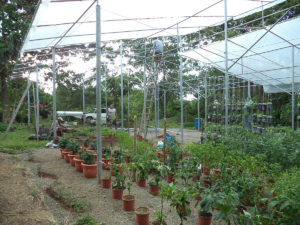 The Roof: is split at the top, which allow hot air to rise up and out of the structure. Wind blowing across the top also can draw the air from inside out, by creating low pressure. Keeping the heat down is very important because our plastic roof lets in a lot of light and heat, so we don’t want it trapped inside. Too many plants won’t grow well if it’s too hot, and heat will also encourage fungus.
The Roof: is split at the top, which allow hot air to rise up and out of the structure. Wind blowing across the top also can draw the air from inside out, by creating low pressure. Keeping the heat down is very important because our plastic roof lets in a lot of light and heat, so we don’t want it trapped inside. Too many plants won’t grow well if it’s too hot, and heat will also encourage fungus.
Gravity System: In the center of the greenhouse is a tower that not only has a great view of the farm, but has a large tank of water. We put the mineral salts into this water and have a set of tubes that go to various regions within the greenhouse to feed water to the plants. This saves us from having to pump the water around.
Shade Curtains: When we rebuilt the greenhouse, we removed many hundreds of square meters of shade cloth. Some of it we will use to make ceiling curtains that can be pulled across some of the greenhouse’s regions to provide 70% or 80% shade, especially during the hottest hours of the middle of the day. This will give us the ability to grow plants such as lettuce who otherwise might overheat, especially during the intense sun of dry season (Dec-Apr).
Hydroponics Growing Media
We are using four different ingredients for hydroponic growing:
-
Gravel (Polvo de Piedra): This is by far the cheapest, but it’s very heavy and it doesn’t hold moisture well. We use it for containers that are on the ground, and for plants that tend to like to have very dry roots.
Charcoal (Carbon): We can burn wood to make this, but have been just buying it. Unfortunately it doesn’t come in the small size we need, so it’s a lot of work to break it up into the tiny pieces that work well for hydroponic gardening.
Coconut Husk (Fibra de Coco): We have a supplier for shredded coconut husk, and this is a great material for growing.
Rice Hulls (Granza): These small little rice hulls are fairly inexpensive and we have sacks of them around for use in making our soil. They’re great mixed in with the other two organic materials above.
Usually we combine two materials, such as coconut fiber and rice hulls. When we use gravel, we often put some coco at the bottom to help hold some moisture, depending on the plant. And of course for the vertical hanging hydroponics projects, we’re using the lightest combinations and never use the gravel.
Hybrid Hydroponics Testing
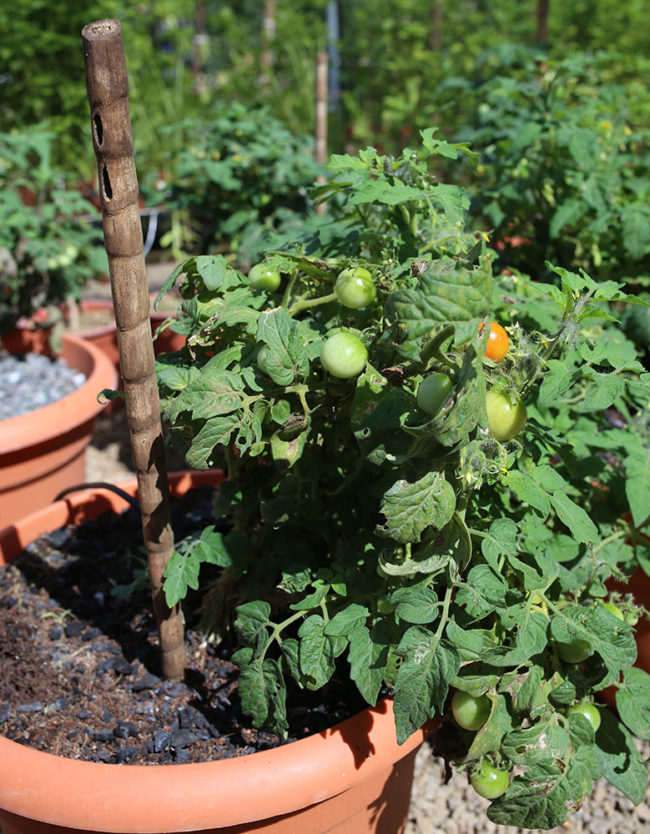 Sometimes we buy starter plants in San Jose that come ready to transplant. They may be growing in high quality soil (much better than we have out here in the coast) or in peat moss. We’ve found that rather than transplanting them into soil, we transplant into a hydroponic medium. So, they get the best of both worlds… a bit of soil with its many benefits, but most of its nutrition comes from the mineralized water we provide. By avoiding the use of our local soil, we don’t have to be troubled by soil-borne fungi, nematodes, and other pests.
Sometimes we buy starter plants in San Jose that come ready to transplant. They may be growing in high quality soil (much better than we have out here in the coast) or in peat moss. We’ve found that rather than transplanting them into soil, we transplant into a hydroponic medium. So, they get the best of both worlds… a bit of soil with its many benefits, but most of its nutrition comes from the mineralized water we provide. By avoiding the use of our local soil, we don’t have to be troubled by soil-borne fungi, nematodes, and other pests.
So far, our tests of this, such as the cherry tomatoes shown on the right, have proven highly successful.
I don’t know if anyone else is doing this, but it seemed like a good idea and is working for us.













